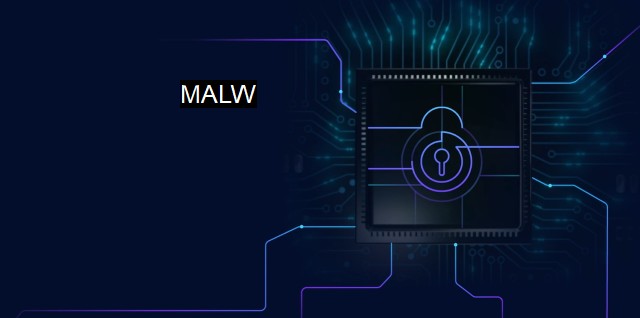What is MALW?
Defending Against Malware: An Overview of Cybersecurity and Antivirus Solutions
MALW, an abbreviation for Malware, can profoundly jeopardize the cybersecurity of an organization or individual. In the cybersecurity landscape, it represents the full spectrum of malicious software that intends to harm computer systems, networks, or users. It's diverse, incorporating different categories such as viruses, worms, ransomware, spyware, adware, trojans, and botnets. The alarming factor here lies in the innovative ways these threats evolve and adapt to breach robust cybersecurity measures.Discussing its functionality, malware distressingly impairs systems by specifically targeting vulnerabilities. Viruses, one of the malware types, infiltrate the system by exploiting the loopholes in its coding structure. The nature of viruses is to attach themselves to an executable file and, when this file is run, the virus copy grabs this opportunity to spread further, affecting other files.
Spyware has a slightly distinctive mode of action. It keeps assuming an unseen avatar in the system and keeps recording and transmitting the users' actions to the cybercriminal. It gives the attackers unique insights into the activities, preferences, and behavior of the user, thereby leading to identity thefts (in cases of password breach) or a personalized phishing attack.
One of the most feared types of malware is ransomware which after having drowned into the system, begins with encryption of crucial data files. Following this, it flashes messages demanding a ransom with a promise to decrypt the files upon payment. This form of attack has the capacity to cripple entire organizations, locking them out of their data files.
Trojans and worms infect systems quietly, doing their destructive action undetected in the background. While a trojan duplicates itself and harms the system internally, worms affect by degrading the performance and spreading across networks fast and flawlessly.
Botnets, the most advanced among malware, control a network of computers (called ‘zombie computers'). These are then further used to attack other systems or to distribute more malware, sometimes resulting in a wider network of demeaned systems.
Interestingly, malware doesn't act at random. Instead, it's driven strategically, targeting specific systems with special emphasis on their vulnerabilities. It can enter systems through network loopholes, a malicious email attachment, harmful websites, or even illicit software. Users may not realize their system is infected until the harmful effects start to show up, inhibiting performance or compromise significant data.
Antivirus and cybersecurity measures have accelerated their proposition to keep pace with this malicious software. Antivirus software proactively monitors the system's file activities, recognizes potential threats, quarantines, or deletes them. Some advanced variants offer real-time protection, prevent downloading harmful files, and alert users when they attempt to access risky websites.
The world of cybersecurity has evolved way beyond traditional antivirus programs. Now, it ambitiously comprises intrusion prevention systems, firewalls, encryption tools, and several cybersecurity suites defending against different kinds of malware at different system levels.
The term "MALW" epitomizes any software deliberately designed to cause harm to a system, server, client, or network. But even as this threat continues to evolve, targeted security solutions are also ramping up their protective capacities. From conventional antivirus software to multifaceted cybersecurity solutions, these defensive systems keep continual vigilance to detect, alert, and counteract harmful influences, leaving users one step ahead of possible cyber breaches.

MALW FAQs
What is Malware?
Malware is a term used to describe any malicious software, code, or program that is designed to harm, disrupt or damage computer systems, networks or devices. It can include a variety of threats, including viruses, Trojan horses, worms, ransomware, spyware, and adware.How does Malware spread?
Malware can spread through various means such as email attachments, malicious websites, social engineering tactics, infected software downloads, and exploiting vulnerabilities in outdated software or operating systems.What is the best way to protect against Malware?
The best way to protect against malware is to use antivirus software, keep your operating system and software up-to-date by installing patches and updates, and avoid clicking on suspicious links or downloading software from untrusted sources. It's also important to regularly back up your data in case of data loss due to malware attacks.What should you do if you suspect Malware on your system?
If you suspect that your system has been infected with malware, the first thing you should do is disconnect it from the internet to prevent the malware from spreading. Then, run a full virus scan with your antivirus software and follow any instructions provided. If the problem persists, seek professional help from a trusted IT expert or cybersecurity professional.| | A | | | B | | | C | | | D | | | E | | | F | | | G | | | H | | | I | | | J | | | K | | | L | | | M | |
| | N | | | O | | | P | | | Q | | | R | | | S | | | T | | | U | | | V | | | W | | | X | | | Y | | | Z | |
| | 1 | | | 2 | | | 3 | | | 4 | | | 7 | | | 8 | | |||||||